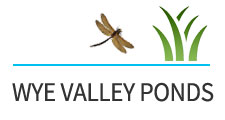aBarley straw applications: Header H2
Barley straw is an age old algae control method that has been used to combat green water and algae issues. Here we will run through its modern applications and why most pond owners do not get the results they are looking for. We will run through how we apply barley straw as an algal preventative and factors to consider in order to achieve the best results.
How does it work? Correct usage of Barley straw for algae control: Header H2
Important factors in the successful use of barley straw in algal control include; type, timing/schedule, positioning and dosage. The straw itself helps in algal control by releasing a mix of chemicals during microbial decomposition under favourable conditions; oxygenated, warm, sediment free water. One of these chemicals can go on to become hydrogen peroxide. These chemicals can be used to treat and inhibit algae growth and have been shown to prevent further growth. Barley straw is most successful in controlling algae when used as a preventative measure.
Types of Barley straw on the market: Header H2
Historically barley straw was sourced direct from the farm and used directly in bale form or loose in mesh bags which were floated in a water body. Now we can find the straw retailed in mesh ‘sausages’ or varying bag sizes, sewed into flat sheets, compressed in to pellet form, in tablets or as a liquid treatment. Most of these are set to treat a certain size pond or volume of water per quantity. The most important factor when choosing barley straw is that it comes from a reputable source/pond specific company or, if self sourcing, that it is clean and comes from a chemical free location as any pesticides or fertilisers can seriously damage your pond and its inhabitants. From here on we will focus on the application of bagged loose straw as this is the most misunderstood and easily available form.
When to use Barley straw – Timing: Header H2
Barley straw becomes effective for algal control as it decomposes. Therefore we want to add straw to our pond before we need it to give it time to begin this process and become active. Microbial decomposition can take between 2-8 weeks to get to the active stage we need. This is relative to the water temperature during application. Warmer water will speed up this process and cooler water slows it down. We work on an average of 4 weeks to be on the safe side. We therefore need to add our barley straw before the algae starts to grow. Algae starts growing in the Spring as temperature and sunlight hours start to increase, therefore we need to add our straw a month before the algae starts growing to achieve the maximum preventative effect. We therefore usually apply the straw in February/March. We work on the straw lasting around 3-4 months and must replace it a month before it has become in-active to maintain continuous treatment. Barley straw can be used year round but is most important during the warmer and brighter months.
Positioning your Barley straw: Header H2
When using barley straw we want to treat all the water in the pond and gain maximum efficiency from the straw. To maximise efficiency we locate the straw at/near to oxygenated water; we therefore locate it at the pond surface where oxygen levels are highest to boost the rate of decomposition. To expose as much water and algae as possible to the straw we must either locate the straw where it can access the most water or where the most water can access the straw. There are two ways to do this depending on the pond layout. If the water body is still such as a garden wildlife pond, we can expose the water to the straw by positioning a single bag in the center or smaller amounts of straw in different locations around the pond. If the water body has moving water such as a stream, waterfall or filter return, we can position the straw in-front to this return to circulate the water through the straw. This has the added benefit of also being a source of highly oxygenated water, further improving its effectiveness.
Barley straw dosage rate: Header H2
Most modern pre-packaged products have the dosage rate clearly shown on packaging. This is especially true for the tablet, pellet and liquid forms. If your loose straw does not, we work it out based on the surface area of the water body using a dosage rate of:
50g/m2 – First or high treatment dosage.
25g/m2 – On-going treatment rate
10g/m2 – On-going preventative rate
As we are usually dealing with smaller water bodies and barley straw is not prohibitively expensive, we can use a higher dose continuously for maximum effect with no risk of damaging the aquatic environment.
A modern alternative to loose straw is a barley straw extract in liquid form, dosages vary with dilution but they make an easy alternative. There are also various pellet styles available.
If you are experiencing algae issues why not call us and see how else we can help resolve your problem.
